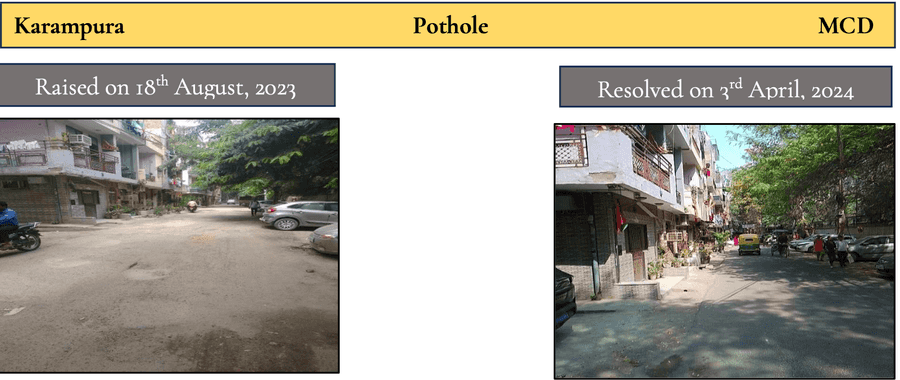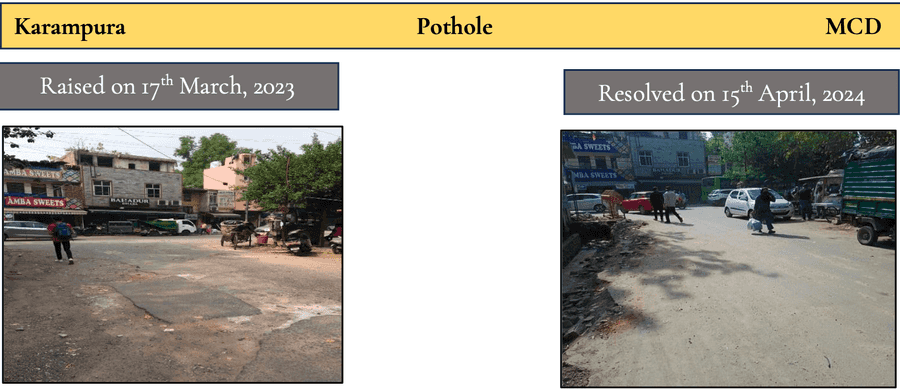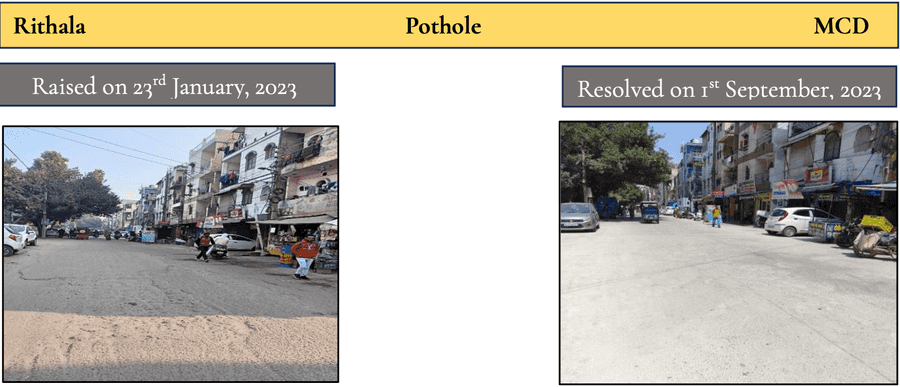Improving air quality by fixing roads
April 03, 20252 minsImagine this. Your local municipal body fixes all the potholes and broken road stretches in your city’s ward. Besides improving mobility (till the next monsoon), it also improves air quality in your neighborhood by a whopping 20%. You don’t say!
But this is exactly what was scientifically observed in 3 Delhi neighborhoods in 2023. Have a look at these before-after pictures and then we’ll get to specifics of the pilot program.
Dispersed sources of pollution – typically garbage burning and dust - are a significant source of air pollution in any city. This study by IIT-Delhi (PDF), under the guidance of CAQM-NCR, Air Pollution Action Group (A-PAG), examined the impact of the dispersed sources program. The study focused on three regions of Delhi (classified as air pollution hotspots) using a combination of hyper- local monitoring by portable low-cost sensors (PLCS) anchored around regulatory-grade Continuous Ambient Air Quality Monitoring Station (CAAQMs).
The study revealed that managing dispersed sources in a systematic way can help reduce air pollution levels by a large margin in these hotspots, and hyperlocal monitoring with due diligence can help understand the effectiveness of such interventions. Impact on PM2.5 Levels in Delhi neighbourhoods:
- Jahangirpuri: 26.6% reduction
- Rohini: 15.7% reduction
- Karol Bagh: 15.3% reduction
Key Methodology:
- Study period: July 2023 - March 2024
- Used portable low-cost sensors (PLCS) and regulatory-grade air quality monitoring stations (CAAQMS)
- Focused on 65 long-term interventions across 3 clusters
- Used “difference-of-difference” approach to measure impact
- PLCS were calibrated against US Embassy BAM with RMSE of 21.92 and R² of 0.91
Types of Interventions:
- Long-term: Paving unpaved roads, repairing significant potholes, fixing broken footpaths/dividers
- Short-term: Removing construction debris, fixing small potholes, managing illegal garbage dumping
Overall Program Performance:
- Total issues identified: 4,315 (4,096 short-term, 192 long-term)
- Resolution rate: 84% of all identified issues
- Impact varied by location due to: local conditions, regional background pollution levels, scale of interventions
The study concluded that systematically addressing dispersed pollution sources can significantly reduce local air pollution levels, recommending expansion to other non-attainment cities under the National Clean Air Program.
Closing note: This study was referenced in The Ken’s podcast - Who and how do you incentivise to solve India’s air pollution problem? Joining hosts Rohin Dharmakumar and Praveen Gopal Krishnan for the discussion were guests Alok Mittal, co-founder of Indifi; Roshan Shankar, founder and CEO of Saroja Earth; and Mohit Beotra, co-founder of Air Pollution Action Group (A-PAG)





